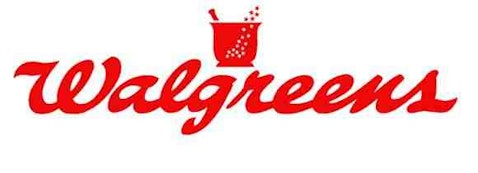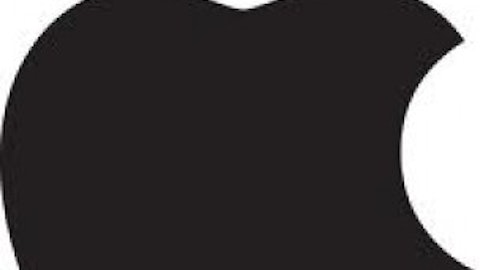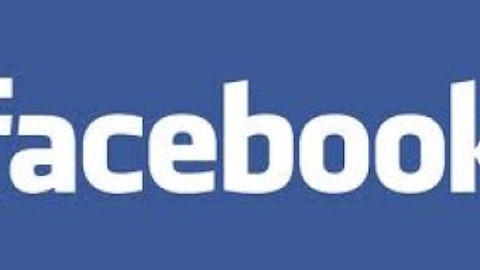Who Carries the Bigger Stick?
Walgreens (NYSE:WAG) made a bet in June 2011, that America’s number one drug store carried more weight in the supply chain than the largest pharmacy benefit manager (PBM), Express Scripts (NASDAQ:ESRX). This bet was finalized when both parties failed to negotiate a contract over reimbursement rates at the end of 2011. Between June and December 2011, the market was unsure of how customers would react to the breakup. The question of stickiness and value to customers came into question for WAG. Various retail pharmacies, like CVS (NYSE:CVS) and Rite Aid (NYSE:RAD), were available to the majority of customers in Express Script’s network that used Walgreens to pick up their prescriptions. The convenience of Walgreens stores and the inconvenience of switching records to another pharmacy weren’t big enough anchors to keep Express Script customers in WAG’s network.
Pharmacies are the final point of sale for pharmaceuticals and the interface between the supply chain and the consumer. Pharmacies generate the prescription drug claims information that PBMs, as well as health plans, employers, governments, and others rely upon to measure consumer activity. Payment for prescription drugs flow from the pharmacy to the manufacturer according to a negotiated contract involving manufacturers, PBMs, and pharmacies. Retail pharmacies negotiate with manufacturers for discounts and rebates based on the pharmacy’s ability to sell specific volumes of certain drugs or achieve a certain share of a specified market. Pharmacies also negotiate with PBMs for inclusion in a PBM’s pharmacy network and for reimbursement for the cost of the drug plus dispensing fees. The price of prescription drugs paid by the consumer is determined by a constellation of negotiated contracts between manufacturers, PBMs, wholesale distributors, pharmacies, and plan sponsors. The price charged by each entity in the chain is largely driven by the ability of contracting entities to sell specific volumes of certain drugs.
After the announcement in June, WAG and ESRX’s stock price dropped incrementally through December 2011. Investors were unsure if ESRX needed the largest drug retailer in their network more than WAG needed ESRX in their network. In 2011 Walgreens had $72.2 billion in sales, with 65% ($47 billion) coming from prescription sales. Of that $47 billion of prescription sales, Express Scripts accounted for 11% and Medco accounted for 15%. Consumers proved in 2012, that the neighborhood drug store did not have the power they thought they had. ESRX clients in WAG’s network chose the low cost PBM over the convenient retail drug store. Customers quickly flocked to other drug store retailers for their prescriptions and WAG experienced earnings that reflected lost clients. Walgreens went nearly seven months in 2012 without renegotiating a contract with ESRX. WAG witnessed ESRX acquire Medco in April 2012, but still didn’t budge to ESRX’s contractual terms. The only thing investors knew was the absence of contract would cause both companies to suffer, leading many to believe that a contract had to be done.
Walgreen Goes International
When Alliance Boots, the largest European pharmacy, was acquired by WAG in a two step process, many investors viewed the acquisition as bad business. The American drugstore agreed to buy a 45% stake in Alliance Boots for $6.7 billion, paid with $4 billion in cash 83.4 million shares of Walgreen’s common stock. As a result of the transaction, Alliance Santé Participations S.A. (of which Stefano Pessina, Executive Chairman, Alliance Boots, is a director and whose ultimate ownership is a family trust) becomes the largest shareholder of Walgreens, with a stake it intends to hold for the long term. WAG intends to purchase the remainder within the next three years. WAG plans on financing the second step of the process for the remaining 55% of Alliance Boots, by paying $4.9 billion in cash and issuing 144.3 million shares. This acquisition was viewed as expensive because WAG trades under 7x EBITDA and the purchase price implies WAG paid 11x EBITDA for Alliance Boots. Walgreens stockholders consisted of many value investors who liked the company’s clean balance sheet, high dividends and low risk. These stockholders felt uneasy after watching WAG’s stock price plummet from the ESRX dispute, and the shift from a clean balance sheet to roughly $19 billion in debt was the icing on the cake for many stockholders. The uncertainty of a resolution with ESRX combined with a risky bet on the regulated European pharmacy industry pushed WAG’s price down to a 52 week low of $28.53.
Alliance Boots has weathered the European storm without a slowdown in performance. Revenues managed to increase YOY in 2012 by 18.4%, while EBITDA grew 10.2% and earnings grew at 10.2%. These figures show that although WAG dropped the bank on the acquiring Alliance Boots, investors shouldn’t have expected a fire sale on a quality company that outperformed YOY in a tough environment. When WAG was priced at $28.53, investors overlooked the fact that the challenging environment provides opportunities. In the wholesale market, where Alliance Boots reaps in 63% of their revenue, there’s a lot of small players who can get credit in easy times, but if they’re not good operators, it’s not so easy now, and that provides wonderful growth opportunities. YOY Alliance boots saw a 29% increase in revenues from their wholesale segment.
Insider and Hedge Funds Reaction
Insiders have been selling shares of WAG, ESRX and CVS. In the last three months insiders have sold a total of 339,626 shares of CVS, 145,120 shares of ESRX and sold 49,782 shares of WAG. Gregory Wasson is the president and CEO of WAG, he hold the largest amount of shares among WAG insiders. On August 15, Wasson sold 16,402 shares and has 303,353 remaining. The president and CEO of ESRX is George Paz. On June 31, 2012, the biggest insider at ESRX, George Paz, sold 129,110 shares. Paz currently holds 731,627 shares.
First Pacific Advisor has quietly become the largest hedge fund holder of WAG. From January to June 2012, the fund incrementally purchased over 800,000 shares, and had 2.27 million shares of WAG in the portfolio as of June. Lone Pine Capital own the most ESRX shares among hedge funds, they have nearly cut their position in half since January 2012. Lone Pine incrementally decreased their holding by 6.62 million shares from January to June 2012.
The Recovery
Walgreen and Express Scripts signed a multiyear agreement last month that will allow patients to again get their prescriptions filled at Walgreen stores as of Sept. 15. Lost customers from the contract dispute can make their way towards a neighborhood Walgreen’s a day before the official store launch of Balanced Rewards. Balance Rewards is a loyalty program that will utilize a point-based system, similar to the program used by Duane Reade, a New York-based chain Walgreen acquired in 2010. The company plans on awarding points for prescription, immunization, and front end sales. These points can be redeemed for gift cards or frequent flier miles. Both CVS and Rite Aid hope their loyalty cards and the inconvenience of switching pharmacies will help them retain ESRX customers.
Competition for customers in the maturing industry is displayed by these loyalty programs. CVS and RAD are pulling out all the stops to keep the ESRX customers they retained from WAG, while WAG is rolling out their own loyalty program in hopes of replenishing ESRX customers. CVS’s loyalty program is the clear leader in the retail drug industry. The company’s ExtraCare loyalty program is more than 15 years old and has 70 million active cardholders (defined as those who have used the card at least once the past six months). Rite Aid, meanwhile, signed up 52 million total members in less than two years after launching Wellness+, which debuted in April 2010. Rite Aid says it has roughly 25 million active members (defined as those that use their card at least twice the past 26 weeks) and those members accounted for 75% of front-end sales and 69% of prescriptions filled in the latest quarter. Rite Aid uses a tier system, in which customers can earn points to reach a certain level that qualifies for in-store discounts on Rite Aid branded products and if especially engaged, can result in a 20% discount on everything sold in the store.
With the heavy storms in their rear-view mirror, Walgreens can now direct their attention to their core initiative. The company no longer wants to viewed as the largest American pharmacy, they are making a push to become the world’s destination for health and daily living needs. With their existing specialty pharmacy services, infusion services, respiratory services, home medical equipment, PBM solutions, mail service pharmacy and vast array of beauty products, WAG already has made strides in fulfilling their initiative. With the acquisition of Alliance Boots, these services will expand further. Alliance Boots services include optical services, pharmaceutical wholesaling and distribution, contract manufacturing and a vast array of reputable beauty products. Although many of the services and products offered by Alliance Boots complement Walgreens initiative, don’t expect Walgreens to translate the various synergies in the short term. Customers have mixed feeling about using their pharmacy for health needs outside of prescription pick-ups and refills. It’s not evident if the convenience of expanded health-care services at neighborhood pharmacies outweighs the questions arising about quality and credibility.






